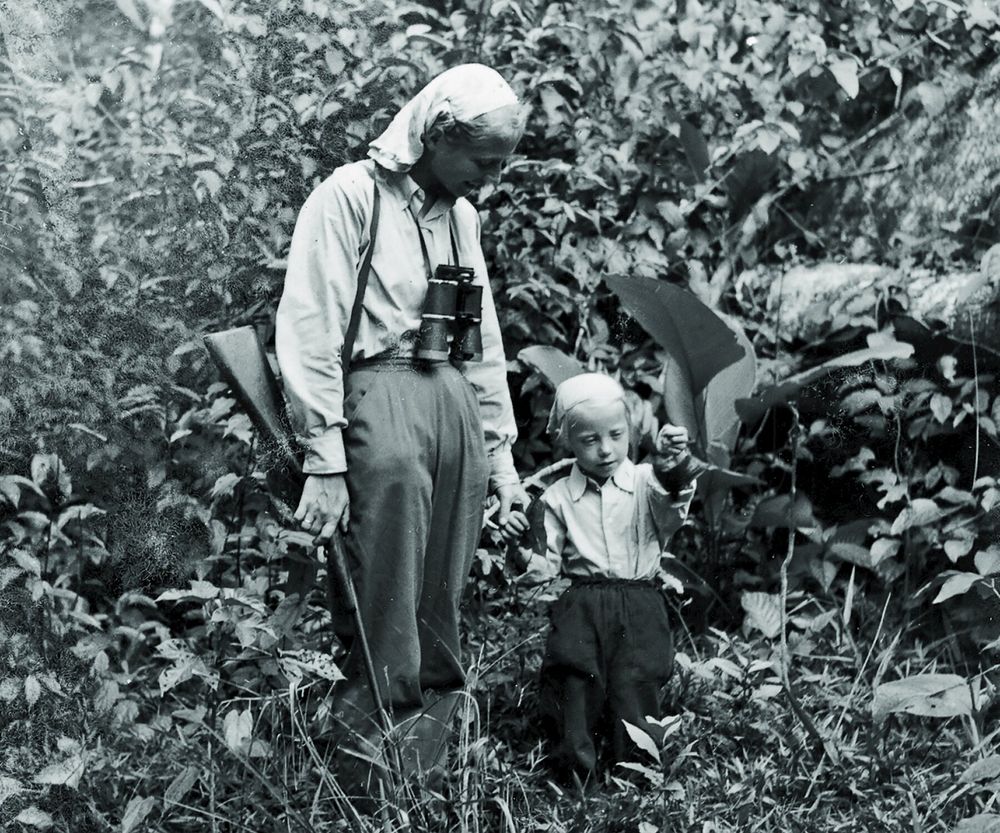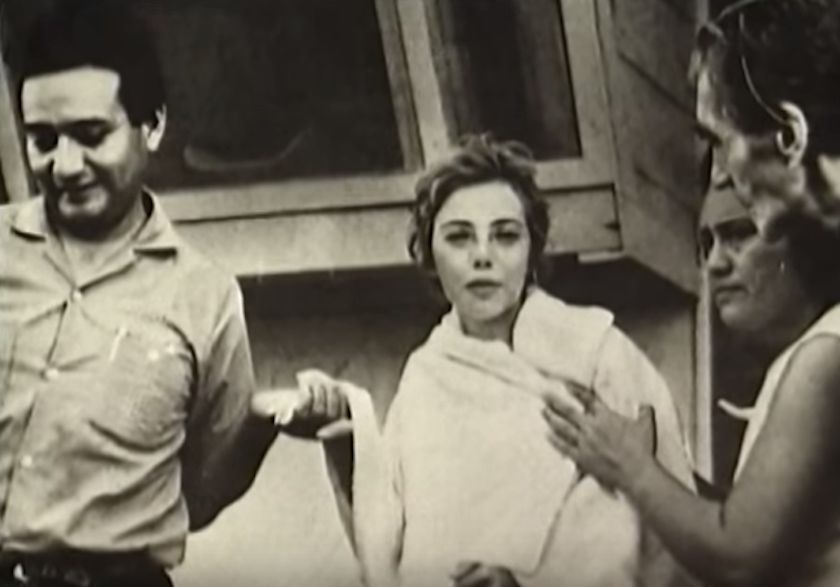Juliane Koepcke was seventeen and desperate to get home.
Their flight was on Christmas eve of 1971, and the plane was already seven hours late.
It was just before noon when Juliane and her mother finally boarded the flight.
The flight to Pucallpa was supposed to last less than an hour.
Overhead compartments flew open, showering passengers and crew with luggage and Christmas presents.
Juliane Koepcke returns to the crash site in 1998.
After about ten minutes of shaking, Juliane saw a very bright flash of lighting strike the left wing.
She heard her mother say, “That is the end, it’s all over.”
Immediately after, the airplane began to nosedive.
As the airplane fell, it broke apart separating her from everyone else onboard.
I could see the canopy of the jungle spinning towards me.
Then I lost consciousness and remember nothing of the impact, she said.
When she woke up the next day, she found herself surrounded by dense foliage.
There was no one else.
The airplane was flying at an altitude of 21,000 feet when it ran into the thunderstorm.
It broke apart at around 10,000 feet, and she fell from that height.
Her survival was miraculous.
Even her injuriesa broken collarbone, a sprained knee and a few gashes on her shoulders and legswere minor.
Juliane Koepcke with her parents.
Despite her precarious situation, Juliane did not feel fear, only a boundless feeling of abandonment.
I recognized the sounds of wildlife from Panguana and realized I was in the same jungle, she said.
Juliane was wearing a very short, sleeveless mini-dress and white sandals.
She had lost her glasses without which she could barely see.
She also lost one shoe but kept the other to test the ground ahead of her as she walked.
The first thing that Juliane did was search for her mother in the vicinity of the crash.
But she could find no debris.
She tried eating the cake but it was saturated with water from the rain.
But there was a small bag of sweets in the Christmas parcel.
She tucked it in.
Juliane and her mother foray into the rainforest in 1959.
The jungle was full of dangers.
Poisonous spiders and snakes hid among the foliage.
In the air there were flies and mosquitoes.
The sight of the corpses sent a chill down her spine.
Her collar bone, broken in the disaster, was becoming more and more painful each day.
The wound in her foot made walking more difficult as the days passed slowly by.
But still she pressed on.
The river was getting wider and flowing more rapidly.
On the 10th day, she stumbled along the edge of a large river.
There was no one inside.
She found a gallon of gasoline, and used it to render crude first-aid upon her wounds.
As soon as she poured gasoline on her wounds, dozens of maggots came crawling out of it.
She pulled some thirty maggots from her cuts and felt immensely proud with herself.
Juliane Koepcke after her ordeal.
That night she slept on the bare boards of the hut.
That rain saved her life.
The men treated her wounds and gave her something to eat.
Juliane Koepcke had spent eleven nights in the Amazon forest.
She was the only survivor of the flight.
After her harrowing experience, Juliane moved back to Germany from where her parents came.
In 2011, she published her own autobiography,When I Fell From the Sky.
Panguana is now the oldest biological research station in Peru.




